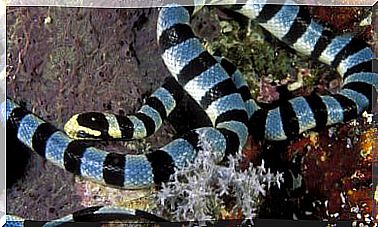The Iberian Wolf In Danger Of Extinction

The Iberian wolf, present in Spanish and Portuguese territory, is currently in serious danger of extinction. It is a species protected by the Habitats regulation of the European Union. But in Spain the initiatives for its conservation are not uniform. As a species, it is vital for the sustainability of ecosystems and biodiversity.
The natural habitat and its relationship with humans
The Canis lupus signatus , Iberian wolf’s name is a predator in the Iberian Peninsula for a long time. Especially in the northwest quadrant of the Peninsula. It feeds on large herbivorous prey, and is crucial in sustaining the ecosystem. It is said to be the ancestor of dogs.
The natural habitat of the species are regions where a low density of human population predominates. In addition, they frequent sites with a great diversity of prey such as deer, roe deer and wild boar. The ability of the wolf to adapt to the environment makes the basis of its diet change depending on where it lives. Chickens, cattle and rabbits supplement their diet in regions where others are scarce.
This represents a problem for rural sectors whose economy is based on livestock farming. The most important factor at this point is to achieve human tolerance to live with this species. And the development of protection and prevention mechanisms that guarantee coexistence.
The Iberian wolf in danger of extinction
It is estimated, according to the latest wolf population censuses carried out, that Spain is the natural habitat of more than 30% of the wolves in Europe. For this reason, the species has been declared of community interest by the European Union. So far in Spanish territory there are no uniform regulations that protect it.

On the contrary, poaching and in many cases poisoning, exacerbate the vulnerability of the Iberian wolf and expose it to disappearance.
Some supporting data
According to estimates from the last census of the Iberian wolf carried out between 2012-2014, the herds have increased from 250 to 297 since 2005. However, connoisseurs and environmental groups say the data is not real. They consider that important aspects such as the number of specimens in each herd have not been taken into account.
Furthermore, the official censuses by region have not followed a uniform methodology or homogeneous criteria in the field. For all this it is difficult to know the real population of wolves in Spain.
It is estimated that an average of 800 specimens are killed per year, a situation that is mainly linked to poaching. The truth is that it is a species that has disappeared in the middle of the Iberian Peninsula. In 2015, environmental associations recognized it in danger of extinction in Andalusia, where the population is between 4 and 56 specimens.
The Iberian wolf : importance for the ecosystem
Currently, the densest presence of the Iberian wolf is in the municipality of Muelas de los Caballeros, in Zamora. There is also 50% in the north of Castilla y León and less than 35% in Galicia. Some populations also survive in Sierra Morena (Jaén and Cuenca).
Initiatives for conservation
The Ministry of Agriculture has been demanding the European Union so that the Iberian wolf is considered a hunting species throughout the territory.
From the public and private spheres, various citizen demonstrations demand state intervention to ensure the protection of the species throughout the Spanish State. They also ask for the generation of instances of dialogue between the various sectors that in one way or another are involved or feel harmed.
Some of the initiatives in the Spanish territory regarding the subject are:
- The presentation of concrete proposals to the political formations for the defense of the Iberian wolf. They are produced by ASCEL (Association for the Conservation and Study of the Wolf), Ecologists in Action, Lobo Marley and WWF.
- Proposition No. of Law approved by the Commission of Agriculture, Food and Environment. This regulation will serve for the conservation of this animal and the declaration as a protected species throughout the territory.
There is an initiative presented by the Unidos Podemos-En Comú Podem platform. In it , the Government is urged to include the species in the list of special protection north of the Duero. In addition, it requests that the wolf populations south of the Duero be included in the Spanish catalog of Threatened Species and declared in “danger of extinction.”









